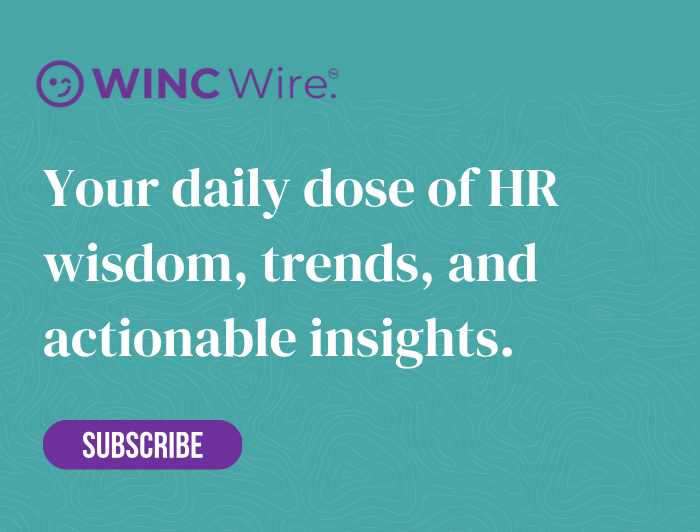Walk into any office, and you can feel it almost immediately. You know the score: there’s either the low hum of a team firing on all cylinders, or the heavy silence of one that’s running on fumes. It can be subtle; a lack of energy, everyone staring intently at their screens, conversations that are polite but utterly lifeless. This isn’t about laziness, not at all. It’s what happens when the connection, the sense of purpose, that initial spark, slowly erodes. And like a lightbulb dimming over time, you often don’t realise how bad it’s got until the room is nearly dark.
Disengagement rarely makes a grand entrance. It creeps in quietly, showing up in the ideas that never get voiced, the fading enthusiasm, and the new starter who arrived full of fire, only to see that flame extinguished by a team just going through the motions. It feels a bit like trying to light a candle in a gale; a hopeful act, but ultimately a fleeting one.
So, what’s the answer? Having helped scale organisations from a tight-knit team of 20 to a workforce of 300 across vastly different sectors, from the detailed precision of automotive to the people-centric warmth of hospitality, I’ve learned one thing. Reigniting engagement isn’t about flashy perks or grand, empty gestures. It’s a grounded process of cultivating meaning, building genuine momentum, and fostering mutual respect. Let’s explore a few pathways that I’ve seen deliver real results.
Why engagement is core strategy, not a ‘nice-to-have’
Let’s get one thing crystal clear: employee engagement is not some fluffy HR initiative. It sits at the very core of your operational strategy; it’s the engine room of the business.
Engaged people don’t just clock in and out; they show up. They’re the ones solving the problems you didn’t know you had, championing new ideas, and delivering not just what’s on their job description, but genuine transformation. The data doesn’t lie. Gallup’s research consistently shows that highly engaged teams deliver 21% higher productivity, 22% more profitability, and a 10% boost in customer satisfaction.
In a market where your agility, culture and brand are your sharpest competitive edges, disengagement isn’t just a missed opportunity; it’s a serious structural risk. If you’re serious about building an organisation that’s fit for the future, you have to start by properly fuelling your people with clarity and purpose.
Six practical steps to reignite engagement with purpose
1. Dismantle the silos and build the bridges
Far too many companies operate like a disconnected chain of islands, with pockets of talent isolated from each other by rigid structures. You can’t expect speed or unity when your departments are effectively rowing in completely different directions.
You need to actively encourage people to think horizontally, across the business. Yes, tools like Microsoft Teams can facilitate this, but it’s the culture that drives real collaboration, not the software. Try running cross-functional workshops or idea sprints, or even rotating people through different project teams. At Allwyn UK, we saw this approach generate not just a wealth of new ideas but, just as importantly, a new level of respect between functions.
A collaborative culture never happens by chance; it has to be designed with clear intention.
2. Make recognition a daily rhythm, not a rare event
I remember from my time in hospitality how a simple, handwritten note from a general manager after a particularly tough Saturday night service could completely change a person’s week. That principle is universal. Recognition that is meaningful, timely and specific is an incredibly powerful motivator. And yet, studies tell us that only one in three employees feels genuinely recognised for their work.
It’s our job to embed appreciation into the daily rhythm of the organisation. This means training your line managers to spot and acknowledge not just the numbers, but the effort, the initiative, and the impact. You could introduce tools like Bonusly for simple peer-to-peer praise, but never, ever underestimate the power of a sincere ‘thank you’ delivered in front of the team.
Recognition isn’t about putting on a ceremony; it’s a cornerstone of your culture.
3. Rethink what ‘collaboration’ actually means
True collaboration has little to do with physical proximity; it’s about shared purpose. People work far more effectively together when they can see exactly how their individual contribution fits into the bigger picture.
Take a hard look at your meetings. Are they genuinely for alignment, or are they just clutter in the calendar? Introduce regular check-ins that have a clear, stated intent. And please don’t be cynical about team-building. When it’s done well, even something as simple as a shared lunch or a moment to celebrate a collective win can rebuild trust and strengthen working relationships.
At its heart, collaboration is about creating a sense of belonging. If you can foster that, you’ll see ownership and accountability blossom.
4. Ensure feedback is genuinely a two-way street
Real engagement can only flourish in an environment where people feel they have a voice and are visible. An ‘open-door policy’ sounds nice, but it’s completely meaningless without tangible follow-through. That is what builds trust.
By all means, use anonymous tools like Typeform to gather honest feedback, but don’t you dare let it sit in a report gathering digital dust. You must share the outcomes, credit the ideas, and close the loop. When your team sees their input actually shaping decisions, they feel like they are part of the journey, not just passengers along for the ride.
Think of feedback as the heartbeat of a responsive organisation. Keep that pulse strong, and your culture will thrive.
5. Get people outside, literally
Sometimes the best cure for stale thinking is a bit of fresh air. Genuine connection isn’t always forged in a boardroom. I once worked with a creative agency that swapped its stuffy monthly town hall for a group hike. I can tell you now, more innovative ideas flowed on the way up that hill than ever did in the tired old conference room.
Quarterly outings, walking meetings, or properly planned creative offsites are not indulgent luxuries. They are catalysts for camaraderie. We aren’t wired to sit at desks all day; give your people the space to breathe, connect and think differently.
6. Offer perks that address real-world priorities
Your company perks should never be performative. They are a direct reflection of how well you actually understand your team’s needs, and consequently, how much you truly value them.
It’s time to think beyond the beanbags and the fancy coffee machine. Benefits like genuine flexible hours, proper wellness stipends, and accessible mental health support speak volumes about your organisation’s values. There are some excellent platforms like SnackNation and Clockify that can help you deliver human-focused options at scale.
When your perks are thoughtful and relevant, they stop being simple retention tools and become powerful engagement accelerators.
What to avoid: Four silent killers of engagement
Of course, even the most well-intentioned strategy can be completely scuppered by the wrong mindset. Be vigilant for these common traps:
- Forcing too much internal competition
Recognition should be about uniting people, not dividing them. A bit of healthy challenge can be motivating; a culture built on winning at all costs simply breeds burnout and toxicity. - Engaging in ‘feedback theatre’
If you ask for people’s opinions and then proceed to ignore them, you can’t be surprised when they stop offering them. Asking for feedback and then failing to act on it is worse than not asking at all. It erodes trust. - The curse of micromanagement
Constant, rigid oversight sends a very clear message: “I don’t trust you.” Autonomy and accountability are two sides of the same coin. You have to empower your people, not smother them. - Hiring without cultural intent
You can teach most skills. You can’t teach cultural alignment. You must hire for shared values and attitude, not just for a list of keywords on a CV.
A final thought: Engagement is a living commitment
Reigniting employee engagement isn’t a one-off project or a quarterly initiative you can tick off a list. It’s a constant, living commitment from the leadership team. It demands genuine presence, a great deal of patience, and a clear sense of purpose. But when you get it right, the positive effects ripple through the entire business: retention improves, output gets stronger, and your culture becomes your greatest asset.
Just start where you are. It could be a handwritten thank-you note. A team check-in with a clear and honest purpose. Or that difficult restructure that finally removes the silos holding people back.
As I find myself saying more and more often these days:
“Engagement isn’t a strategy; it’s the heartbeat of your business.”
The real question isn’t whether you can afford to invest in this. It’s whether you can possibly afford not to.
Let’s get to work. The future of your organisation is sitting in your team right now. It’s time to reignite that spark and bring them back to life.






